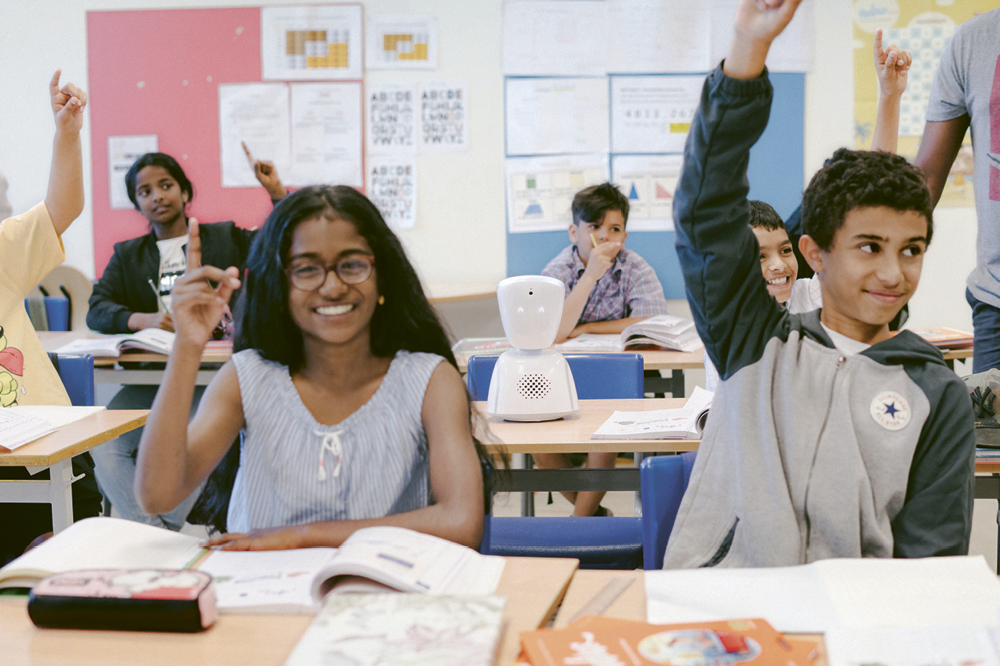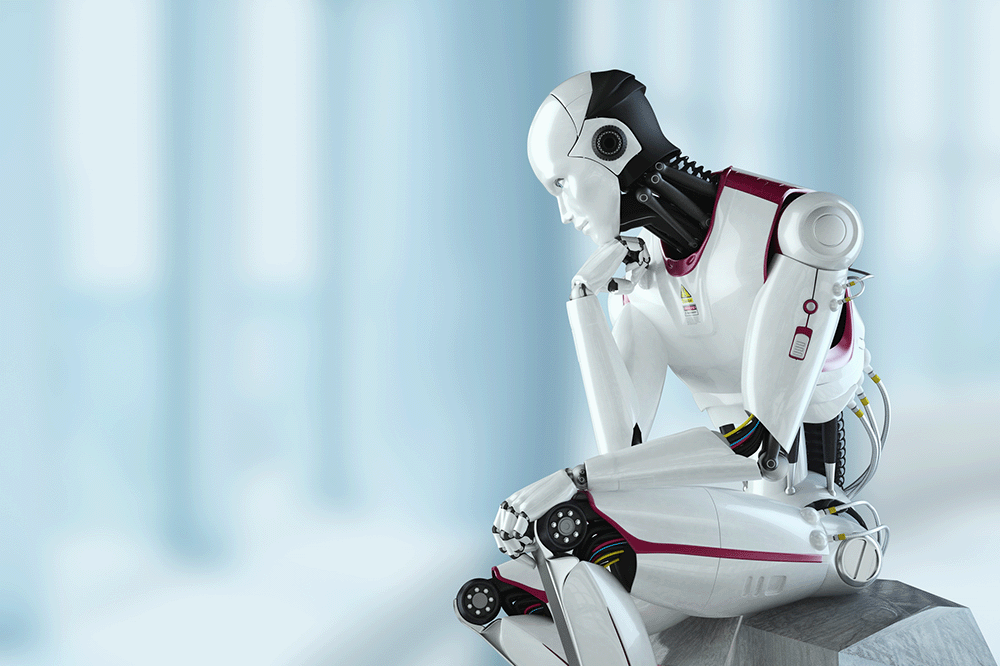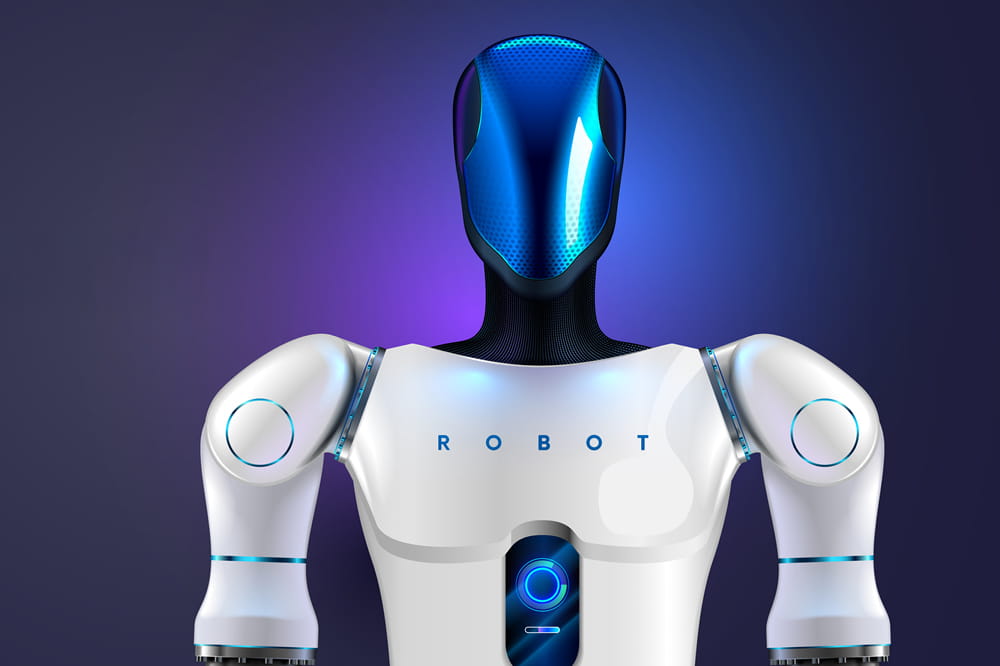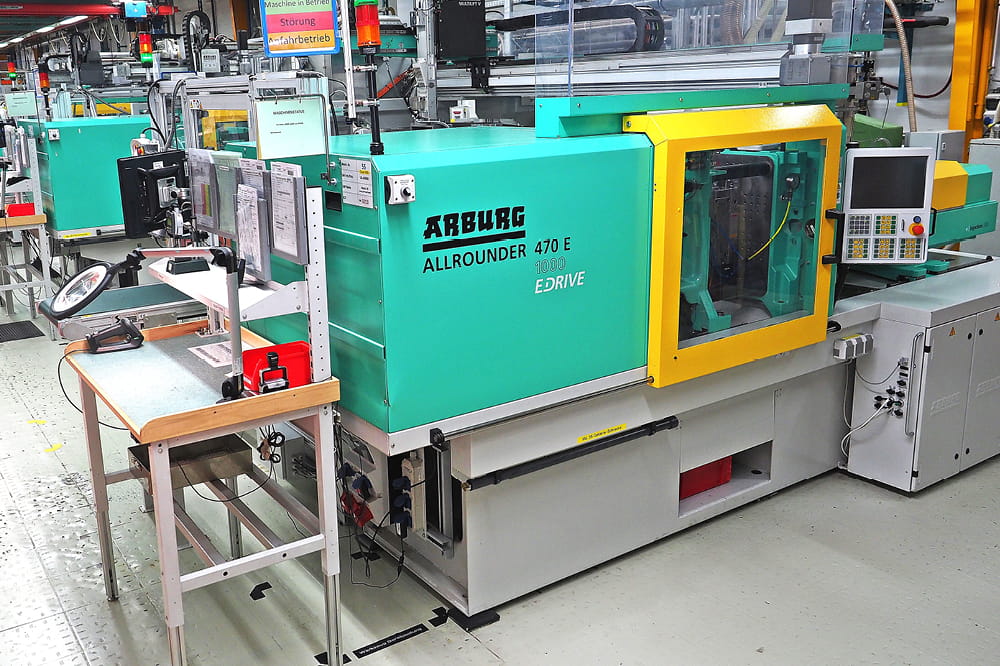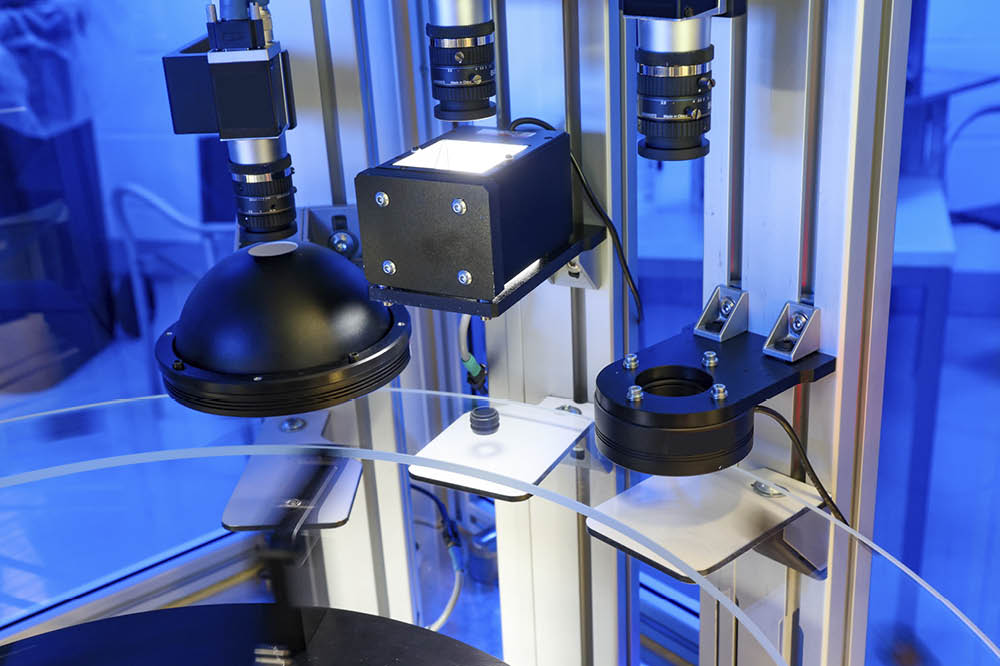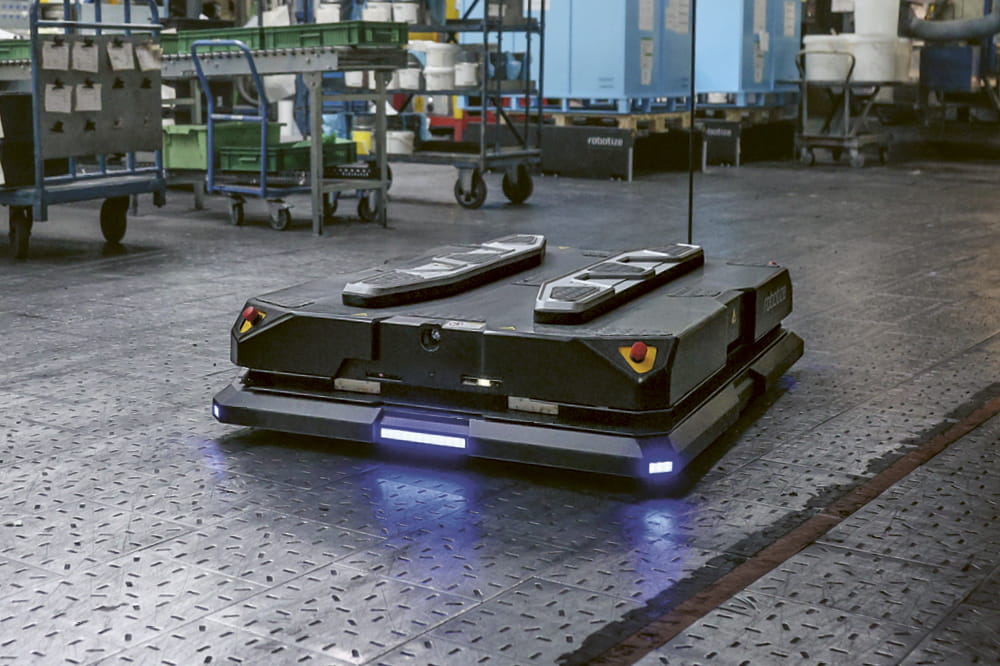Obtain news and background information about sealing technology, get in touch with innovative products – subscribe to the free e-mail newsletter.
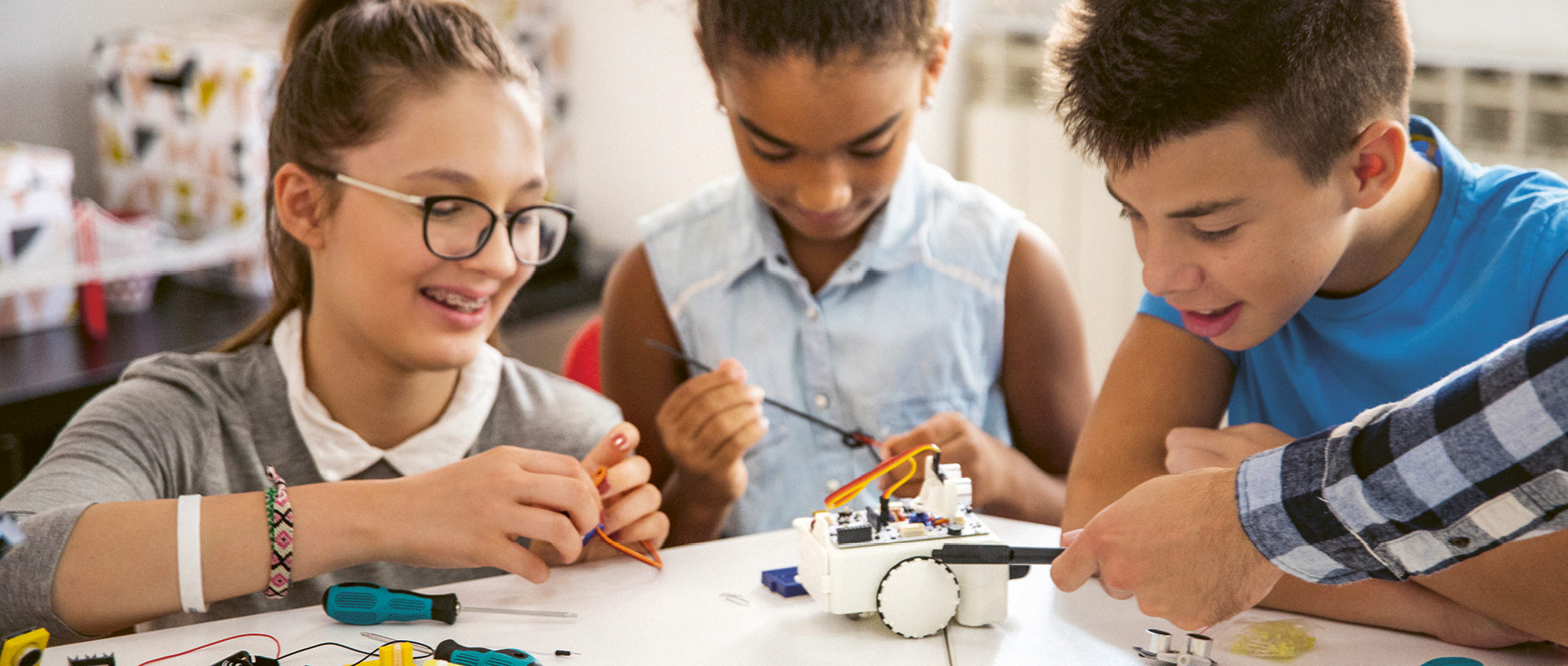
02.11.2021 | Story
Android at the Blackboard
Teaching thrives on empathy, creativity and social relations. Can robots play a meaningful role in education? Absolutely – and in very different roles, ranging from a vocabulary trainer to a seatmate. They aren’t merely changing the school routine – they are transforming education itself.
“You do that really well,” Elias, the teacher, tells the pupil. His eyes light up as he speaks, but in an unusual color: neon blue. And his voice sounds a bit tinny. Elias’s surname is “Robot” and he is not human. He literally stands eye-to-eye with the pupils only when he is mounted on a desk. “Elias Robot” has a humanoid form and is the co-instructor teaching English to Finnish primary school students. He drills them with vocabulary and motivates them to speak. In fact, he even dances Gangnam style if he has to!
Robots create a safe space for the students. They do not make judgments when there are mistakes.
Fascination as a Positive Effect
Humanoid robots today have mastered a great deal of what teachers are expected to do: listen, explain, dictate, praise and correct. They have the ability to stand physically in front of the class and teach. The children’s fascination with a robot can even have a positive impact on them. Robots are definitely capable of identifying feelings and responding to them. The fact that they are nonetheless machines that neither feel nor make judgments creates a safe space for the students. It matters less who the students are and more what they are capable of doing. Robots don’t condemn students for making mistakes either.
Ideally, “Elias Robot” doesn’t act as a teacher, but rather as a tutor and guide. The robot from the Finnish company Utelias Technologies conducts vocabulary drills with individual students. The advantage: While the robot chats with the more advanced students, the teacher can concentrate on those who need more help. Teachers can take advantage of the robotic support and create more space for individual help. This only becomes a disadvantage when the fascination leads the class to regard the robot more as a toy or buddy and to lose the focus on learning.
Robots in the classroom
The language-learning robot “Elias” is based on “Nao,” its humanoid predecessor. It is already a standard, especially in education and research. The software company Utelias Technologies has geared its Elias model to the instruction of children. Elias has mastered more than 20 languages and allows conversation in real time.
AV1This robot from a company called No Isolation represents children who are confined to their homes or a hospital because of long-term illness. With the help of its sensors, the pupils sit in the classroom virtually and can even communicate. It is expected to help them maintain their connection to the school and their social lives.
OVObotThe Finnish startup OVObots developed this teaching robot especially for math instruction. It assigns problems and responds with immediate feedback. It can also recognize children’s individual capabilities.
Robot Seatmates Strengthen Self-confidence
The concept of the robot as a friend and classmate could be exactly the right approach: When a robot has a similar level of knowledge as the students, the class goes on an excursion. The students then teach the robot. Educational experts know how well explaining things helps to internalize learning content – and strengthens self-confidence at the same time. A robotic fellow student can also be beneficial from a health perspective: If a pupil is seriously ill or suffers from an immune deficiency, the robot can substitute for him in class. The child controls the process from home and can see teachers and fellow students using a camera – and even communicate with the help of light signals and a voice function.
The digital connection makes it possible to keep up with the material and maintain a connection with a student’s social milieu and friends. The robot from the Norwegian company “No Isolation” is called the AV1.
Educational robots can begin working even before primary school. For example, parents of kindergarten students in Singapore face a tricky decision: Do they send their child to a kindergarten where the children can play with the robotic telephone “RoBoHoN” and the robotic astronaut “Kirobo” – or perhaps to the “R2D2 Lab,” the “In3LABS,” or the Roboto Academy? One website in the Southeast Asian city-state even highlights “the 10 best robot classes” for children. The clear message: It is never too early to learn robotics. With the “Kibo Robot,” for example, four- to seven-year-olds learn to assemble their own robots and program them by assembling wooden blocks end-to-end. In play, children develop a basic understanding of technology – and much more, as Kibo’s scientist-inventor Marina Umaschi Bers notes. She compares programming with a playground. Children can try things out – and even create them.
Programming Starting in Primary School?
The children also work with one another on a team, developing character strengths. That’s why Bers makes the case for teaching programming in primary school – along with arithmetic, reading and writing. In some cases, robotics is already on the curricula of secondary schools.
A co-worker has now taken over at the robot-teacher Elias’s school in Finland. It is shaped like an egg and is very quickly identified as a robot as well: “What is 67 plus 52?” asks a robot named “Ovobot.” It stands on the work group’s table like an owl and looks at the students with large eyes. A math problem lights up on its display. Using voice recognition, the Ovobot poses questions and hands out points based on how well pupils answer. Teachers can use it in small groups that need drilling even as they continue to teach. The math robot unfortunately doesn’t have a dance in its programs.
More news on the subject Robotics

Join Us!
Experience Freudenberg Sealing Technologies, its products and service offerings in text and videos, network with colleagues and stakeholders, and make valuable business contacts.
Connect on LinkedIn! open_in_new